- Home
- slideshows
- miscellaneous
- Swarms of locusts forced Somalia to declare a national emergency. Skin-crawling photos show how menacing their plagues can be.
Swarms of locusts forced Somalia to declare a national emergency. Skin-crawling photos show how menacing their plagues can be.
Desert locusts are the most notorious — and damaging — breed of locust. They're found in around 30 countries throughout Africa, Asia, and the Middle East, and can swarm through one-fifth of the landmass on Earth.

Each locust in a swarm can eat its own weight in food per day. A small portion of an average swarm eats around the same amount as 10 elephants, or 2,500 people.
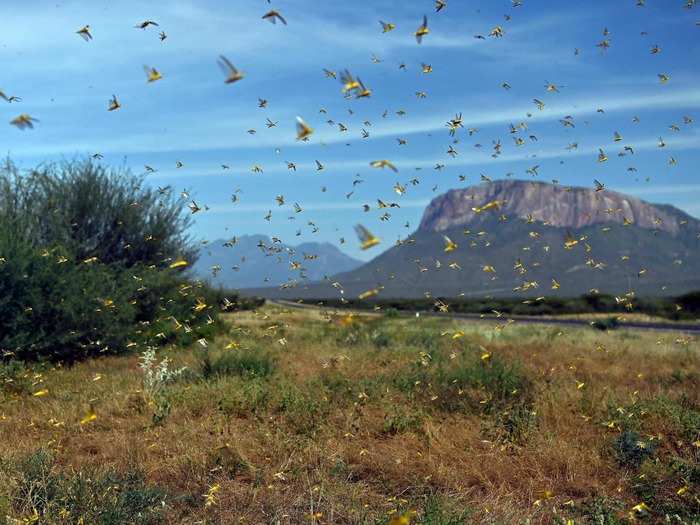
A swarm can spread over 460 square miles, with 40 million to 80 million locusts per half-square mile.
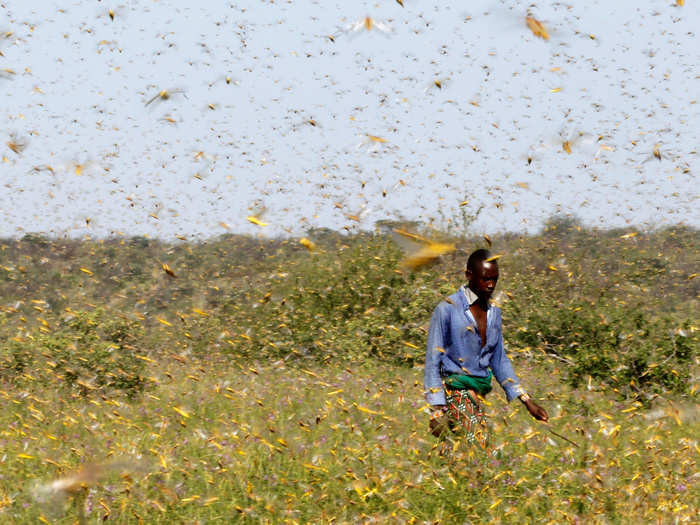
Source: National Geographic
Author Laura Ingalls Wilder describes how terrifying a swarm can be in her book "On the Banks of Plum Creek." She wrote that she could feel the insects squishing beneath her feet and hear and the sound of "millions of jaws biting and chewing."
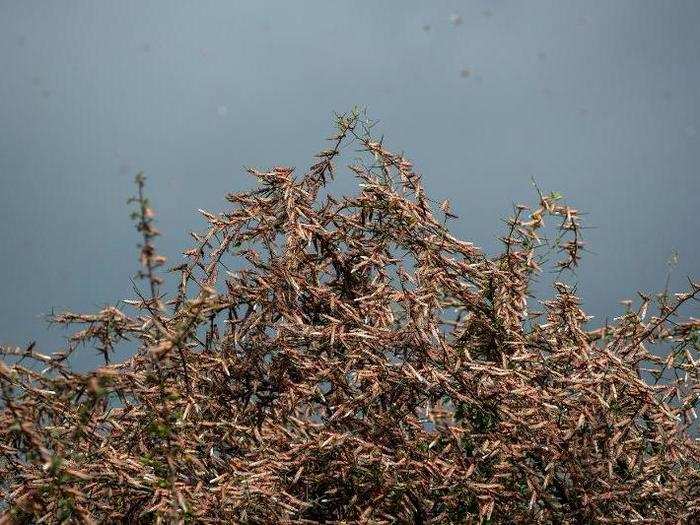
Source: The New York Times
During plague recessions, or "quiet periods," desert locusts typically live in very dry areas of Africa, the Middle East, and South-West Asia that receive fewer than eight inches of rain per year.
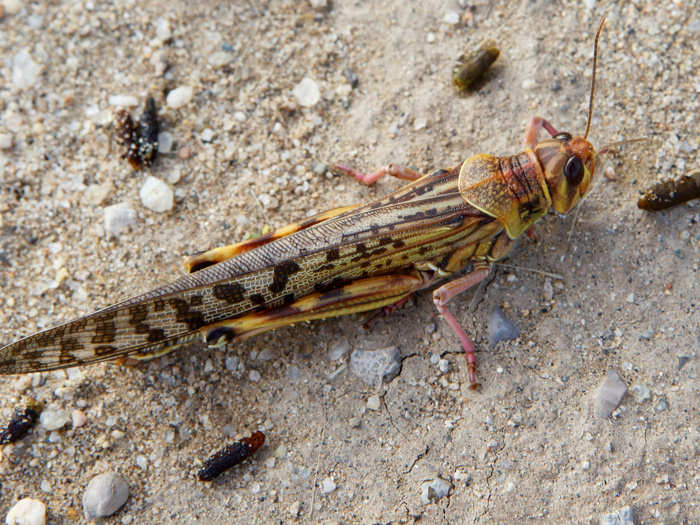
Locust plagues have been recorded since ancient Egypt, but there's no evidence to suggest plagues occur with any regularity, making them difficult to track.
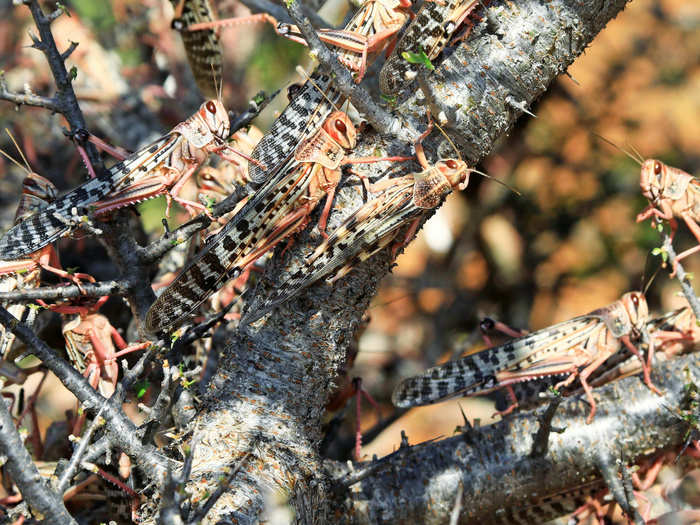
In 1875, the largest locust plague in history turned US skies black, when a swarm 1,800 miles long and 110 miles wide flew over the Midwest. Scientists believe there were trillions of "Rocky Mountain Locusts," a type of insect that's now extinct.
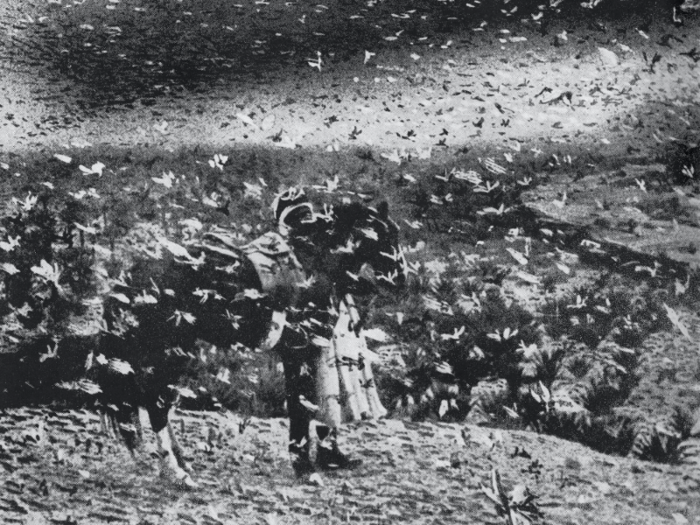
Source: The New York Times
But today's desert locusts are just as havoc-wreaking. According to Dominique Burgeon, an emergency services director at the UN Food and Agriculture Organization, called the current plague in Africa "an unprecedented situation."
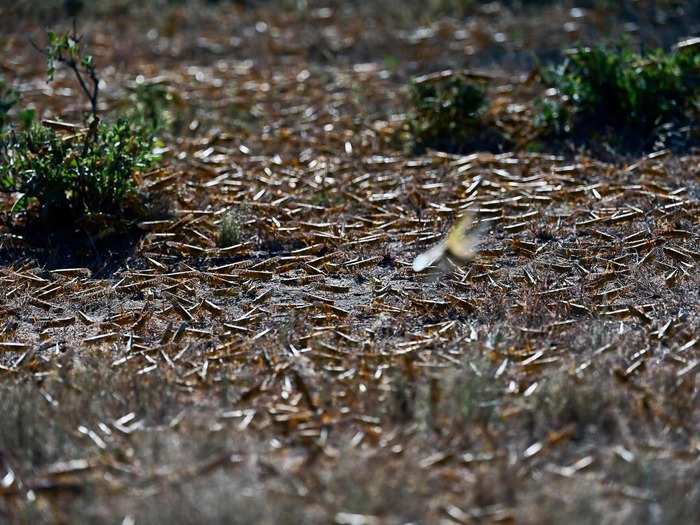
Source: Scientific American
During plagues, desert locusts can spread over millions of miles and travel into parts of 60 countries. This affects over 20% of the earth's land surface, and according to the UN, plagues can damage the livelihoods for one-tenth of the world's population.
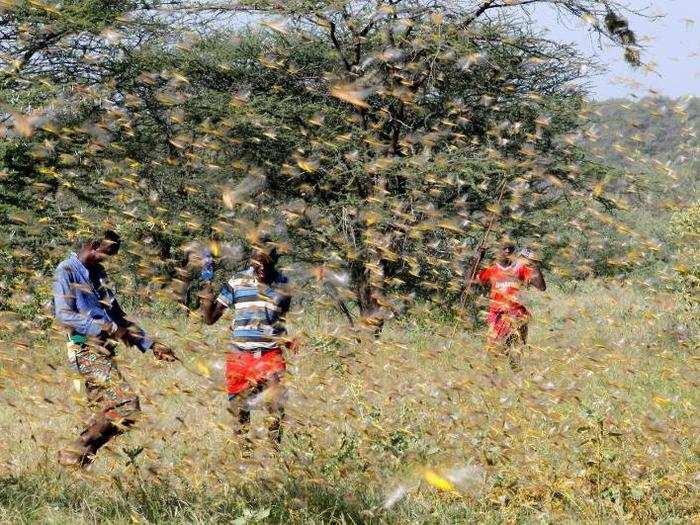
Plagues are defined as periods of one or more years of widespread infestations as a result of good breeding conditions. Throughout the 1900s, there were six recorded plagues. One of them lasted 13 years.
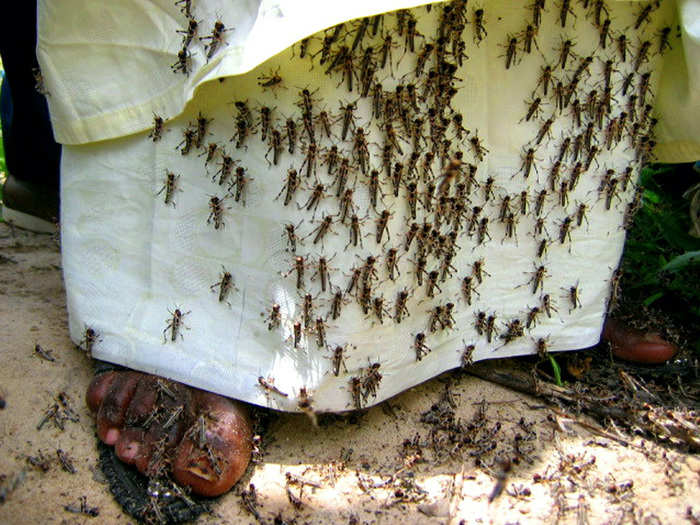
Favorable breeding conditions during plagues include moist, sandy soil, and green vegetation. Females can lay up to 158 eggs per egg pod, and are able to reproduce at least three times throughout their life.
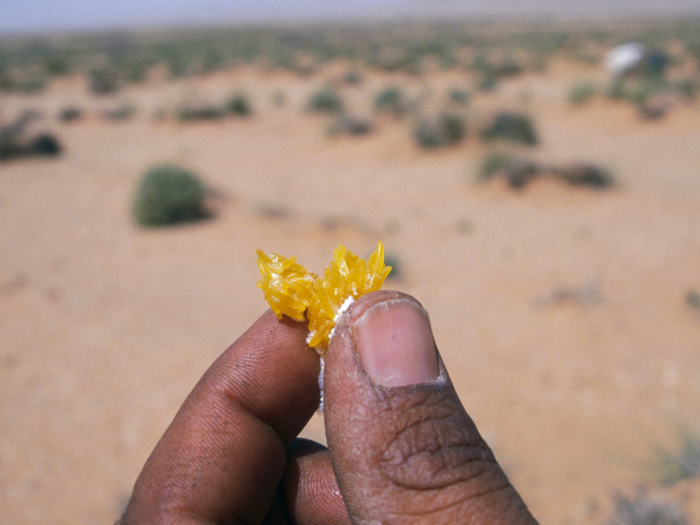
Eggs hatch in about two weeks and can reach adulthood anywhere between three weeks and nine months.
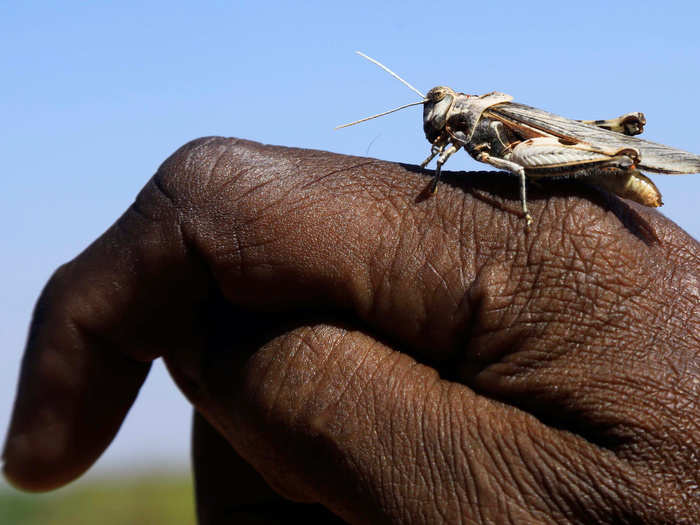
Desert locusts can travel with the wind and easily cover over 90 miles per day, with the ability to stay in the air for a long time. Swarms have regularly crossed the Red Sea, which is 186 miles wide.
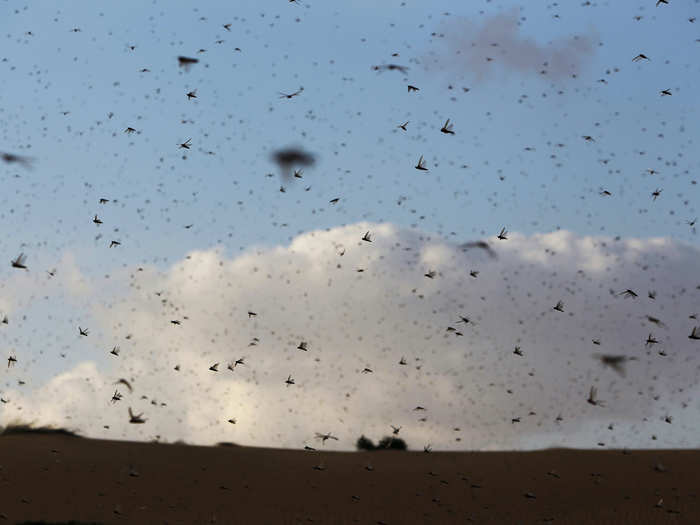
In 1954, a locust swarm traveled all the way from northwest Africa to Great Britain.
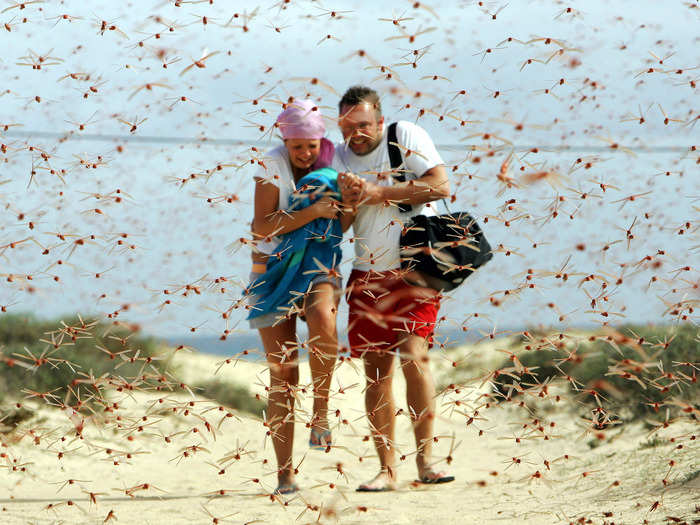
In 1988, a swarm traveled over 3,000 miles in 10 days from West Africa to the Caribbean.
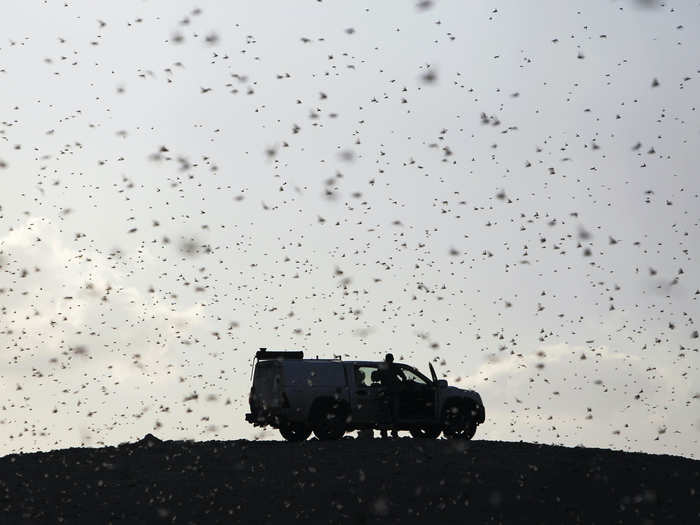
As desert locusts become more numerous, they change their behavior to be "gregarious,"and act as a part of a larger group. During this process their color changes from brown (solitary) to yellow and pink (gregarious).
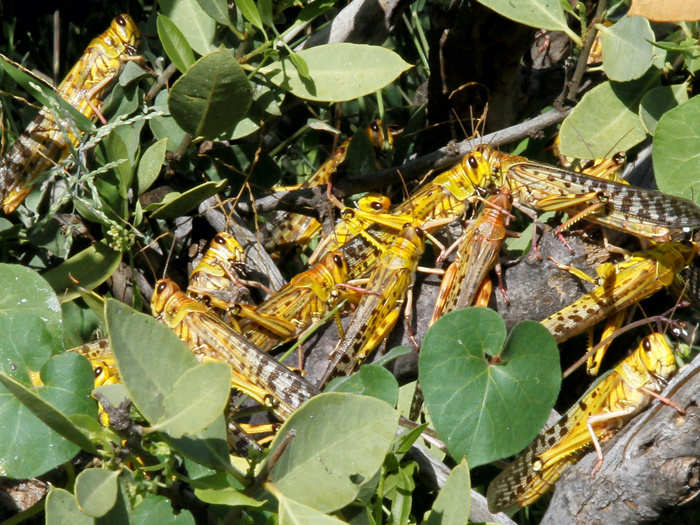
But that doesn't mean locusts are particularly friendly toward one another. They actually become cannibalistic during swarms, and insects that don't move with the flow of the group become easy targets for killing.

Locusts typically have a lifespan of about three to five months, depending on weather and ecological conditions. Since desert locusts breed so quickly, a plague can last longer than a decade.
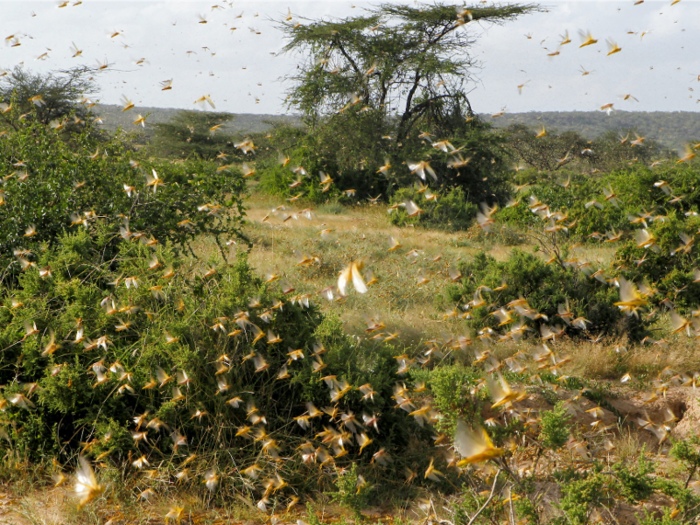
Though swarms can look menacing, desert locusts do not outwardly attack people or animals, and there is no evidence to suggest they carry diseases.
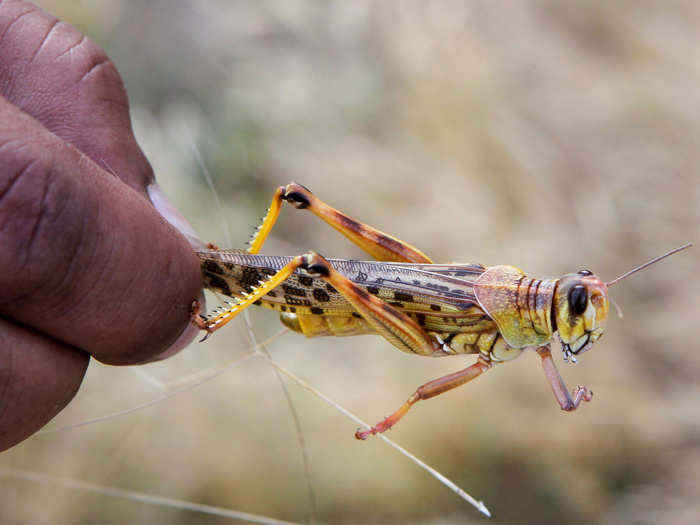
During locust plagues, pesticides are often sprayed from vehicles and small planes. But researchers have turned to non-chemical methods such as changing farming techniques, and focusing on pathogen and insect growth regulators instead.
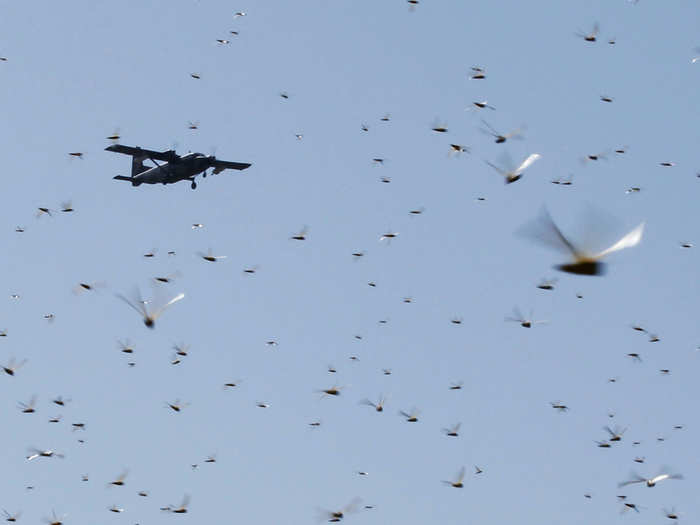
Sources: NPR, UN Food and Agriculture Organization
But fighting locusts is an expensive battle. From 2003-2005, $450 million was spent to stop a desert locust plague in Africa that resulted in $2.5 billion worth of crop damage.
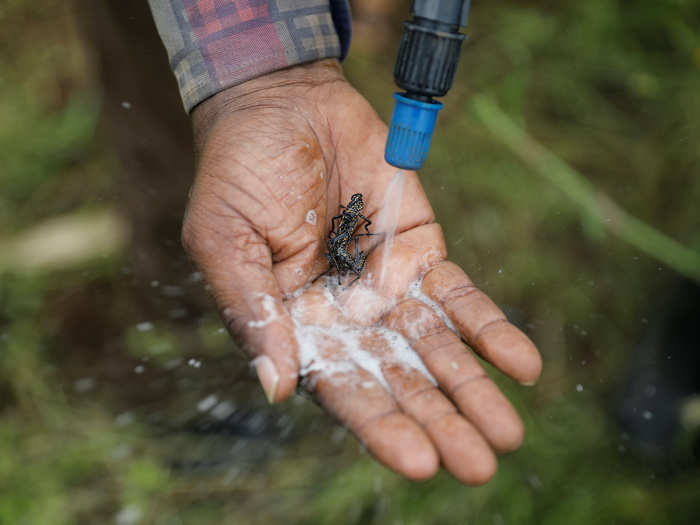
Source: Arizona State University
The current locust plague in East Africa is thought to have originated in Yemen, traveling over the Red Sea to Somalia, Ethiopia, and Kenya.
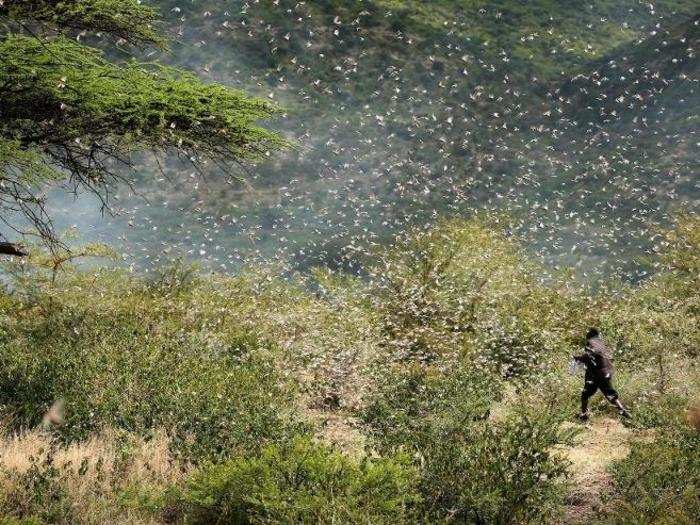
Source: BBC
Unusual periods of heavy rainfall in 2019 created an ideal environment for the insects to breed, according to the UN. Climate scientists blame this on rapidly warming oceans, and as swarms continue to grow, they fear the locusts will soon enter South Sudan and Uganda.

Sources: BBC, Wall Street Journal, UN News, New York Post
Keith Cressman, senior locust forecasting officer with the FOA, told Wired that "A locust plague is much like a wildfire...If you can find it when it's just a tiny campfire, and you can put it out, you're good. No problem." But if not, the swarm will only stop growing when it runs out of food.
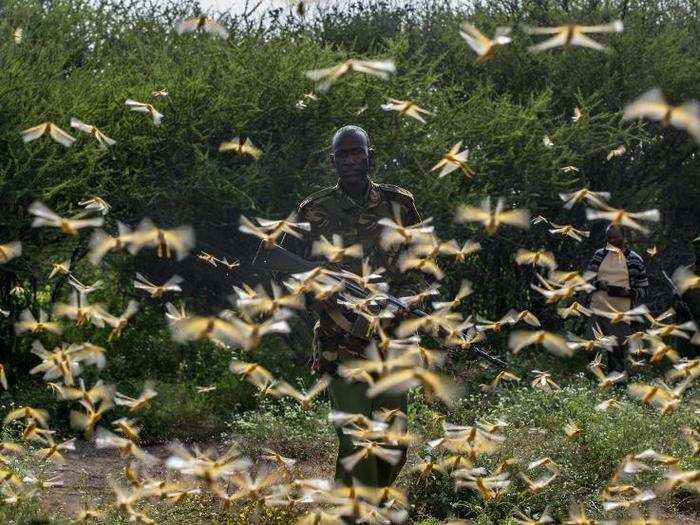
Source: Wired
This has been the largest outbreak of desert locusts in Somalia and Ethiopia in 25 years. In Kenya, a plague of this scope hasn't been seen in 70 years.
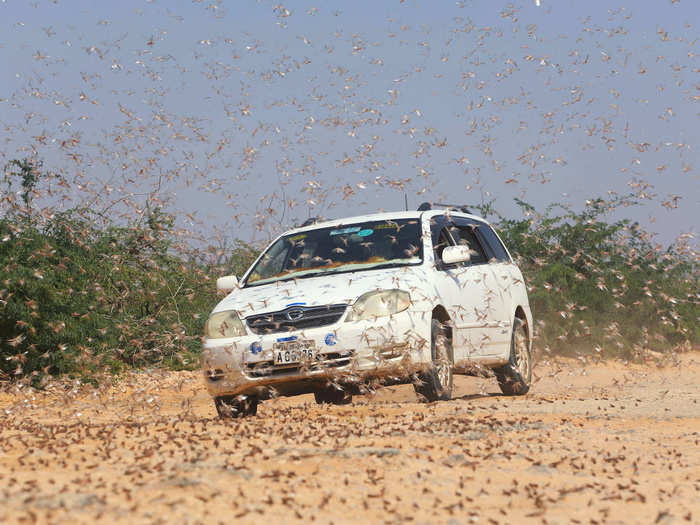
Source: UN News
The UN estimates that 24 million people are already facing food shortages from weather, general food insecurity, and locust invasions. In Ethiopia, the UN warned that eight million people may need food aid from locust crop attacks.
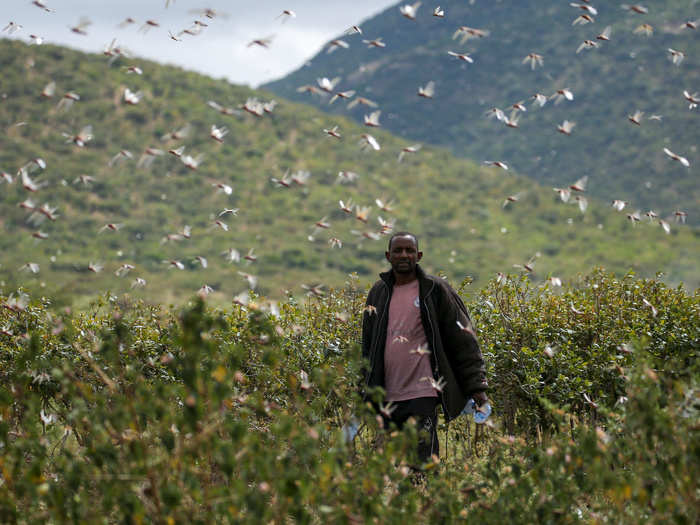
Source: Wall Street Journal
On Sunday, Somalia became the first country to declare the current locust plague a national emergency, saying that the infestation "poses a major threat to Somalia's fragile food security situation."
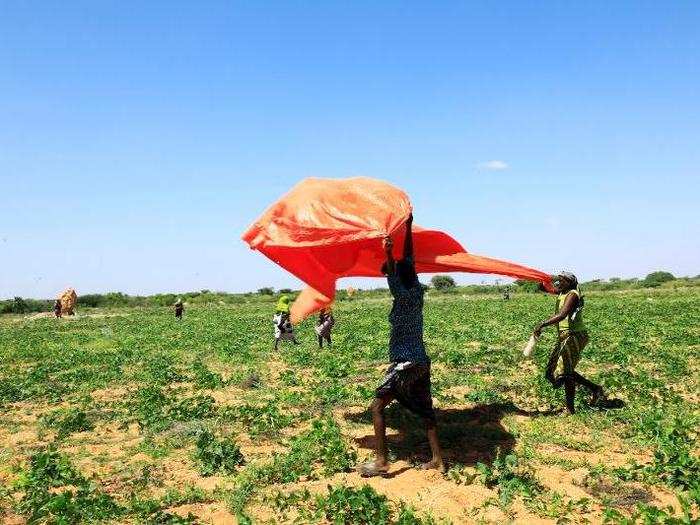
Source: Al Jazeera
The UN is currently seeking $76 million from international donors in order to "urgently support both pest control and livelihood protection operations in the three most affected countries."
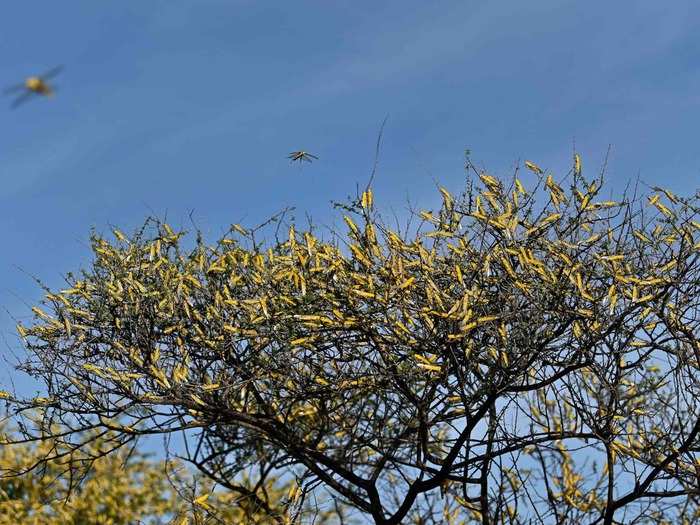
Source: UN News, Business Insider
Popular Right Now
Popular Keywords
Advertisement